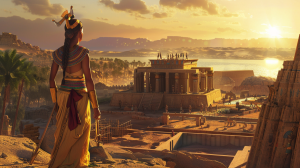The Vezo, native to Madagascar’s coastal regions, are semi-nomadic sea-faring people. Primarily fishers, their culture and livelihood are deeply tied to the sea. Noted for their impressive navigational skills, the Vezo have maintained their distinct identity and traditions over centuries.
The Vezo are a fascinating and hard-working group of coastal dwellers, who have made their homes along the pristine beaches of southern Madagascar. These nomadic sea-faring people have a rich and proud heritage, steeped in the art of fishing and the grace of the ocean. They communicate with each other through a dialect of the beautiful Malagasy language, which is a branch of the fascinating Malayo-Polynesian language family, originating from the exotic Barito languages spoken in the southern regions of Borneo. The Vezo people currently call the littoral zone stretching from Toliara to Mahajanga their home, and they live a life closely connected to the sea, harnessing its bountiful resources to provide for their families. “Vezo” is a term that encapsulates their connection to the ocean, meaning both “the people who fish” and “to struggle with the sea”. It is a name that truly captures the essence of this remarkable tribe, who have learned to persevere against the powerful forces of the sea, day after day, in their pursuit of a better life.
The Vezo people embody the spirit of the sea, as they have lived and thrived off the fruits of the ocean for centuries. These semi-nomadic coastal dwellers of southern Madagascar are connected by their shared way of life and a deep love for the rolling waves and bountiful fishing grounds along the west coast between Toliara and Mahajanga.

The Vezo Identity
They are not defined by ethnicity, but instead by their unwavering connection to the sea and the unique skills they have honed over the generations. Their identity is formed by the callouses on their hands from fishing and swimming, and their bodies and souls are shaped by the struggles and triumphs of life on the sea.
The origins of the Vezo people can be traced back to the mix of Austronesian settlers from Asia and Bantu migrants from mainland East Africa and possibly share ancestry with the Vazimba people, but they hold no illusions of a shared essence with one another. They are proudly distinct, and their population is impossible to quantify as they are known for their semi-nomadic marine migrations. The number of Vezo people is estimated by counting the pirogues, or dugout canoes, along Madagascar’s shores.
The Vezo of Madagascar have a rich and storied history, shaped by their interactions with both the sea and the land. At the heart of this history are two key events – the fleeing of the original Vezo clans from their former village to escape the constant raids of bandits, and the subsequent selection of Andavadoaka as their new home.
These peaceful people were driven to abandon their homes by the unrelenting violence of marauders from inland tribes. With their lives constantly at risk, the Vezo relied on their extensive knowledge of local sea life to turn the tables on their attackers. They cooked and scattered toxic lionfish and gobies around their village, waiting for the bandits to arrive and fall victim to their clever trap. The sight of the bandits’ lifeless bodies, fallen after ingesting the poisoned food, struck fear into the hearts of other raiders and earned the village the name “Antsatsamoroy” or “the dead of moroy”.
Unfortunately, the Vezo continue to face threats from banditry to this day, with cattle rustlers and dahalo stealing from their pastures and putting their lives in danger. In response, the Vezo retreat to their pirogues and send women and children to the safety of nearby islands, temporarily depopulating the village.
Despite these challenges, the Vezo have persevered and found refuge in the hidden location of Andavadoaka. Tucked away between towering limestone outcrops and sheltered by a bay of flattened sand dunes, this village offers protection from both land and sea-based attackers. The name “Andavadoaka” comes from the local landscape, meaning “the depression between the hills”, a fitting description for the Vezo’s safe haven from the tumultuous world around them.
Related Posts
Sources
Longovezo. “Vezo: The Seafaring Tribe of Madagascar.” Accessed February 12, 2023. https://longovezo.com/en/malagasy-culture/vezo.
Wikipedia contributors. “Vezo people.” In Wikipedia, The Free Encyclopedia. Accessed February 12, 2023. https://en.wikipedia.org/wiki/Vezo_people.




